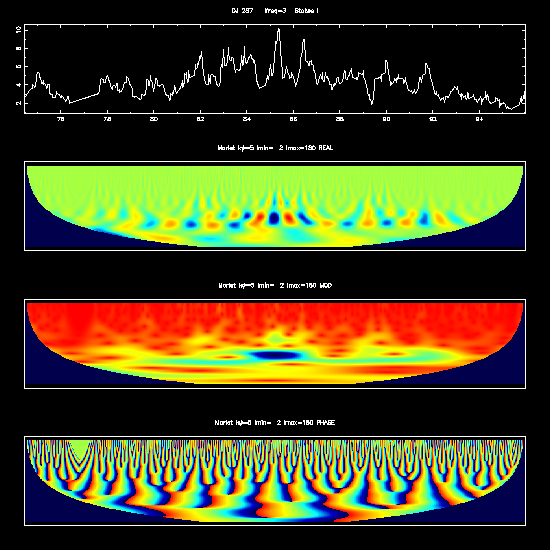
A Morlet transform of several decades worth of 14.5 GHz data for the source OJ 287:

What does this tell us? Is it white noise:
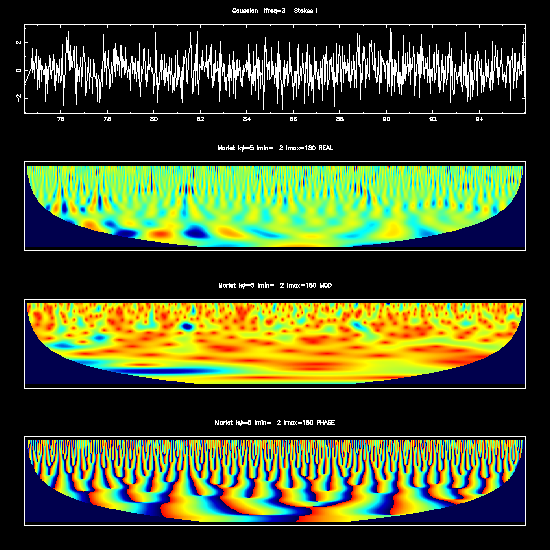
Not likely!!
Note that a wavelet transform provides clear evidence for periodicity, because of redundancy: the transform reflects the peaks and troughs of the signal, and shows this structure at a particular frequency (dilation); thus a pattern marches horizontally across transform space as seen in this period halving example:
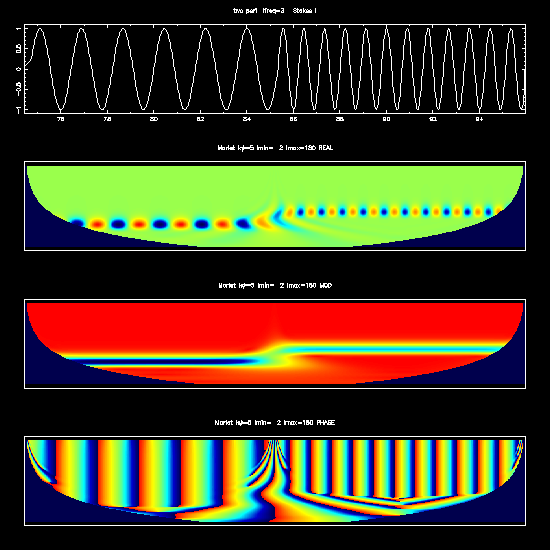
OJ 287 has similar character, but it's not exactly like the previous example. How about the sum of two waves, at slightly different period, one modulated to dominate at mid-times:
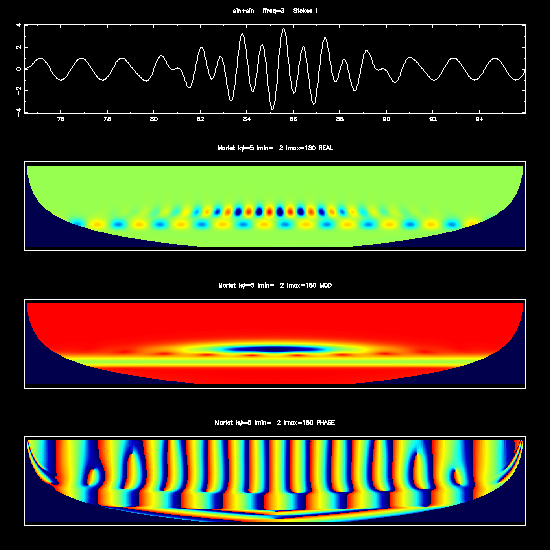
Still not quite right! Here is a toy shock-in-jet model that does a strikingly good job at reproducing the behavior:
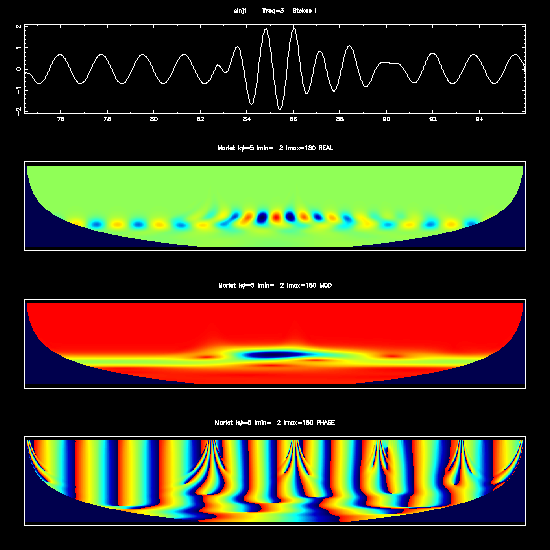
Compare with the first image above, noting that we are trying to reproduce the periodic structures, not longer and shorter time scale "noise".
Time runs from the late 1970s (blue) to the present (red). The clear periodic excursions (mostly in U) suggest some sort of swinging or precession of the jet -- apparently unique to OJ 287, perhaps because in this source we see straight down the jet into its "throat" -- and constitute an exciting new way to explore these flows.